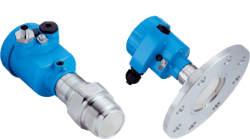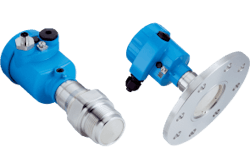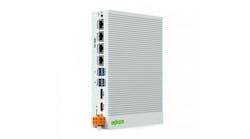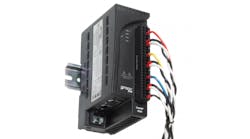Product News: SICK’s LBR SicWave radar sensors
SICK's LBR SicWave radar sensors
The new LBR SicWave radar sensors from SICK promise measuring ranges of up to 120 meters thanks to new 80 GHz radar frequency with high dynamics and a tightly focused aperture angle.
Measuring at a tighter angle means less interference in the signal return, according to SICK. Focusing on a small field of view is also very advantageous in radar-measurement technology. While conventional radar sensors with a frequency of 6 or 26 GHz have an aperture angle of 10-15 degrees, the mere 3 degrees of the new LBR SicWave series make it comparable with a laser beam. The focusing makes it noticeably easier to precisely align the sensor to the material surface without constantly worrying about faults caused by installations or deposits on the walls, according to its maker.
The focused beam path is also much more reliable regarding dust, which is a natural product of bulk materials, especially when pneumatically filled. This property also makes it easier to retrofit the modern radar sensors with small process connections without making constructional modifications to the silo or doing costly recertification, per SICK. Existing couplings often provide enough space for installation.
For easy installation, commissioning and monitoring, the new LBR SicWave radar sensors are equipped with a WPAN interface that enables access from up to 25 meters away with a smartphone app. The series designed for bulk materials works reliably in a temperature range of -40 to +392 degrees Fahrenheit and at pressures between -1 and +20 bar.
The wide working range makes it possible to perform many different tasks with just one radar sensor, and without complex calibration. Defining the application and the measuring range with its minimum and maximum distance to the bulk materials as well as the DC value range is sufficient. The DC value specifies how well material reflects radar beams. Due to the high dynamics of 120 dB, the sensitivity of the new sensors mean it can now measure the level of bulk materials, which were previously not suitable for radar technology according to SICK.



